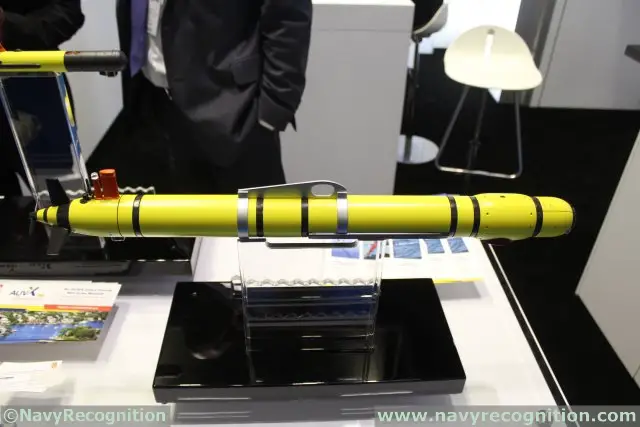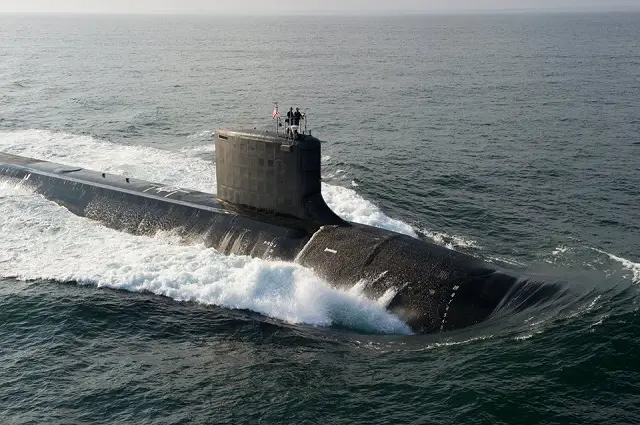Breaking news
First Block III Virginia Class Submarine USS North Dakota Deployed & Recovered a REMUS UUV.
| 2015
 Kongsberg's REMUS 600 AUV scale model on display during UDT 2015 show |
|||
The
REMUS 600 autonomous underwater vehicle was designed through funding from
the Office of Naval Research to support the US Navy's growing need for
operations requiring extended endurance, increased payload capacity, and
greater operating depth. The REMUS 600 has been designed to operate to
depths of 600 meters, allowing for greatly increased operational scope.
The highly versatile system can also be configured for 1500 meter operations. North Dakota is the 11th Virginia-class attack submarine to join the fleet, and the first of eight Block III Virginia-class submarines to be built. The Block III submarines are built with new Virginia Payload Tubes designed to lower costs and increase missile-firing payload possibilities. The 10 current Virginia-class submarines have 12 individual 21-inch diameter vertical launch tubes able to fire Tomahawk Land Attack Missiles (TLAMS). The Block III submarines being built will have two-larger 87-inch diameter tubes able to house six TLAMS each. Virginia-class submarines are 7,800 tons and 377 feet in length, have a beam of 34 feet, and can operate at more than 25 knots submerged. They are built with a reactor plant that will not require refueling during the planned life of the ship reducing lifecycle costs while increasing underway time. Virginia-class submarines are built to dominate the world's littoral and deep waters while conducting Anti-Submarine; Anti-Surface Ship; Strike; Special Operation Forces; Intelligence, Surveillance, and Reconnaissance; Irregular Warfare; and Mine Warfare missions. Their inherent stealth, endurance, firepower, and sensor suite directly enable them to support five of the six Maritime Strategy Core Capabilities - Sea Control, Power Projection, Forward Presence, Maritime Security, and Deterrence. |
|||



























